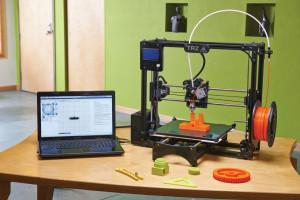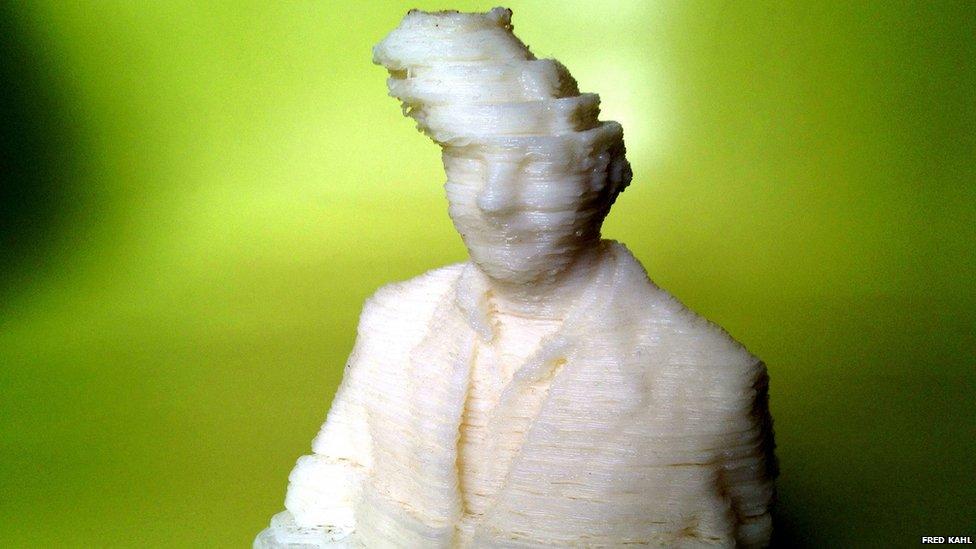It is true that the 3D printing reality doesn’t always match up to the 3D printing fantasy that 3D printer manufacturers often sell to us. Despite dozens of 3D printer models claiming to be a ‘one button 3D printer,’ or an ‘out of the box 3D printer,’ anyone who has ever used a 3D printer knows full well how completely untrue that is. The fact is, the future of 3D printing probably isn’t going to be with desktop 3D printers as promised, but more likely it will be with industrial 3D printing and 3D printing service providers. And the reasons are pretty simple: when you buy a 3D printer you won’t be owning a toy, you will be owning a tool. 3D printers are designed to be used, and it takes work to use a 3D printer.
3D printing is tricky on the best of days, and even the most reliable desktop 3D printer is going to produce failed or imperfect prints far more often than people would expect failed results from other similarly priced technology. Can you imagine if even ten percent of the slices of toast that you tried to make ended up being burned? Not only would you stop using the toaster that keeps burning your toast, but you’d probably call toasting bread a waste of time and find another way of doing it. There are simply too many variables at play when you 3D print at home; not only will you need to make sure that the printer is calibrated correctly, but you need to make sure that there is no moisture in your filament and that nothing accidentally bumps the printer while it’s working.
Then there is the need to have the ideal temperature setting for the material that you’re using, which is not always an easy task when different manufacturers have their own formulations of even the most basic of filaments and they often have varying ideal printing temperatures. The extruder alone is always going to be a reoccurring headache for anyone who owns a 3D printer. Needing to deal with clogs and jams can test even the most patient of souls. While desktop 3D printers have made some amazing technologic advancements in the last few years that will help reduce these types of incidents, no one has come close to eliminating them entirely.
The actual creation and handling of the 3D models that you want to print are also going to trip up novice users, and it is unlikely that will change any time soon. If you want to replace a broken knob on your stove, where are you going to get the 3D model? Realistically you’re probably going to need to design it yourself because appliance companies aren’t in the habit of keeping large databases of 3D printable replacement parts, especially since they can charge a lot more for actual replacement parts. It is certainly exciting that people familiar with CAD software can design and then 3D print things that only exist in their heads, but not everyone can do that. There are several software options that make designing 3D models easier, but none of them eliminates the need for users to have the ability to do some sort of digital sculpting.
Alternately, as Lifehacker points out in their How To Make 3D Printed Stuff Without Owning a 3D Printer article, there are several options for experienced 3D printer owners just looking for any work that you can send their way. There are many people online who are willing to design whatever 3D printable file that you want, and several options to them have that 3D file printed. National retail stores like Staples and The UPS Store offer inexpensive 3D printing options, and many areas will have libraries that include small makerspaces with on-site 3D printers. There are also several online options available, including full service 3D printing bureaus like Shapeways or loosely knit 3D printer networks that can be hired locally through 3D Hubs. As Lifehacker points out, it’s just really easy to have something 3D printed for you these days.
Now don’t take any of this as a suggestion that owning your own 3D printer is a bad idea, it is far from it. However, just like any tool that has a steep learning curve, like a table saw or a routing machine, a 3D printer will take work to use. You will need to understand how the extruder works so you can unclog it when it inevitably happens. You will need to understand how a 3D file works so you can make sure that it is watertight and manifold before you send it to your machine to start printing. So if you’re not the type of person who minds getting their hands dirty a little bit and figuring out how stuff works, then at this point owning a 3D printer is probably not for you.
3D printing is an amazing technological achievement, and its influence and reach will only expand further the longer it is around. But it is still very early in the game to expect everyone to already know the rules. It is okay to sit on the sidelines for a little while and let the technology settle down and become more reliable. You can still be part of the 3D printing industry, even without a 3D printer. And if you do want to be an early adopter, then there has probably never been a better time for you to get a 3D printer than right now. But you need to remember that you will be expected to know how to use, maintain, upgrade and provide maintenance to even the best models of 3D printers. And if you’re not sure exactly which you are, then use the 3D printer alternatives that Lifehacker lists and you’ll figure it out eventually.
Subscribe to Our Email Newsletter
Stay up-to-date on all the latest news from the 3D printing industry and receive information and offers from third party vendors.
You May Also Like
Nylon 3D Printed Parts Made More Functional with Coatings & Colors
Parts 3D printed from polyamide (PA, Nylon) 12 using powder bed fusion (PBF) are a mainstay in the additive manufacturing (AM) industry. While post-finishing processes have improved the porosity of...
3DPOD Episode 193: Flow and What’s Possible in 3D Printing with Ricky Wildman, University of Nottingham
Ricky Wildman is working on 3D printing pills, but, as Professor of Multiphase Flow and Physics at Nottingham, he does a whole lot more. His research encompasses the characterization of...
3D Printing Webinar and Event Roundup: March 17, 2024
It’s another busy week of webinars and events, including SALMED 2024 and AM Forum in Berlin. Stratasys continues its in-person training and is offering two webinars, ASTM is holding a...
3D Printed Micro Antenna is 15% Smaller and 6X Lighter
Horizon Microtechnologies has achieved success in creating a high-frequency D-Band horn antenna through micro 3D printing. However, this achievement did not rely solely on 3D printing; it involved a combination...


































